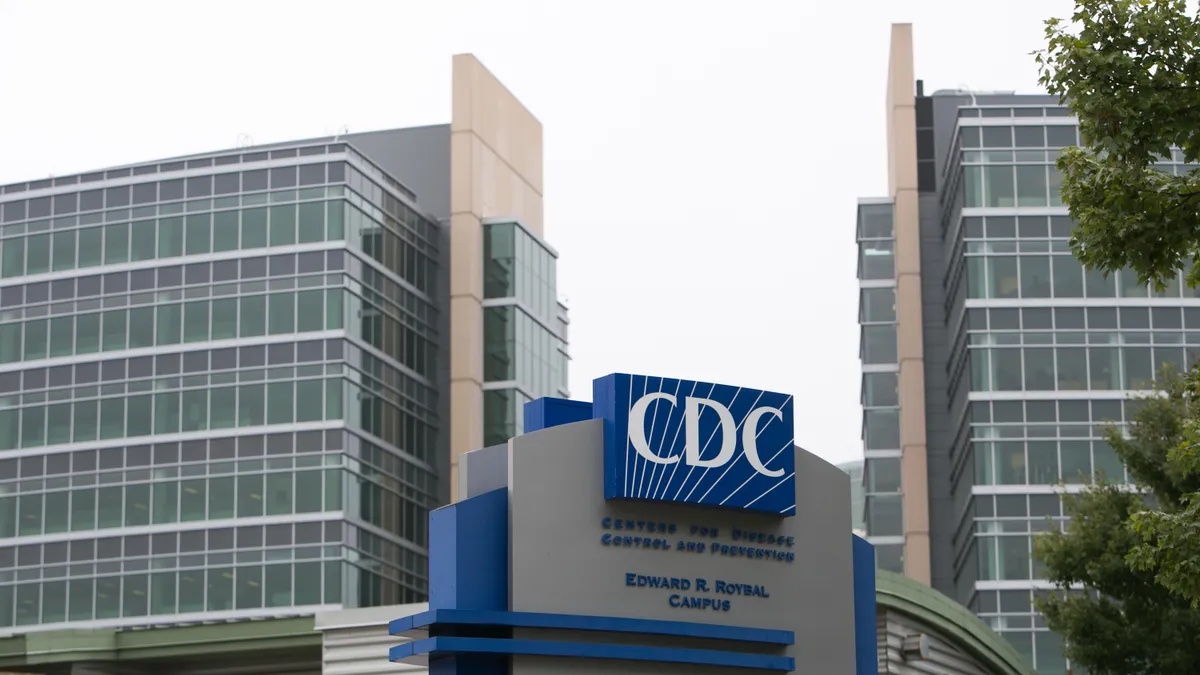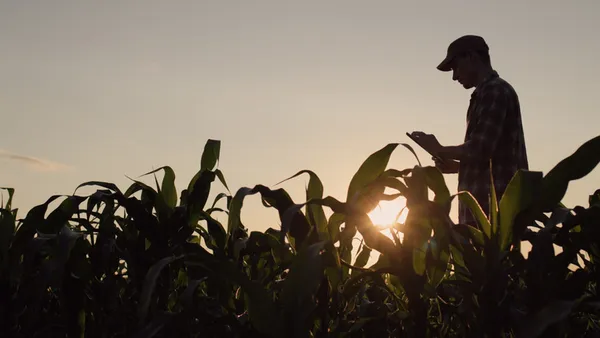Dive Brief:
-
The Centers for Disease Control and Prevention asked states to make face masks and other personal protection equipment available to livestock operations as more details emerge about a Texas farmworker who caught bird flu after working with dairy cattle.
-
CDC Principal Deputy Director Nirav Shah on Monday said state health officials should work with local agricultural partners to distribute personal protective equipment at dairy farms, poultry farms and slaughterhouses.
-
A study in the New England Journal of Medicine found that a Texas farmworker infected with bird flu exhibited redness and discomfort in the right eye after close exposure to dairy cows, including cattle exhibiting signs of illness. The worker wore gloves, but lacked eye or respiratory protection.
Dive Insight:
CDC's recommendations come as new research reveals that cattle may be “mixing vessels,” serving as natural reservoirs for human and avian influenzas to combine into potentially new and harmful strains of the bird flu.
In a bioRxiv preprint, researchers found that dairy cows harbor both human-flu and avian-flu receptors in their mammary glands, meaning the animals could be an intermediary between flus of different species. Pigs are well-known mixing vessels, and public health officials say bird flu detections in swine would be cause for major concern.
“If the virus were to find itself into the pig population that, for various biological reasons, [is] a perfect vessel through which an even more virulent strain could emerge,” Shah said.
Just two people have tested positive for bird flu in the U.S., and the CDC has stressed that risk to the general public remains low. The agency has not detected changes in genetic makeup of the virus that would increase the likelihood of bird flu jumping from human to human.
“However, within any risk assessment, we always know that there are individuals on that spectrum for whom the risk is higher,” Shah said. In addition to livestock workers, the CDC is also focusing its attention on a smaller group of individuals who drink or consume raw milk, which does not undergo the pasteurization to inactivate viruses like bird flu.
When around farm animals, workers are encouraged to wear fluid-resistant coveralls, a respirator or N95 mask, gloves, boots, safety goggles and other forms of personal protective equipment to protect themselves from bird flu exposure, according to updated CDC guidance.
In an effort to combat bird flu, the U.S. Department of Agriculture’s Animal and Plant Health Inspection Service recently issued a request to gather information from interested companies to see if they could develop, license and manufacture a safe, effective vaccine for cattle.
The agency said its request is for preliminary market research to better understand potential sourcing options for the vaccine and is not a solicitation or constitute a request for proposals.











